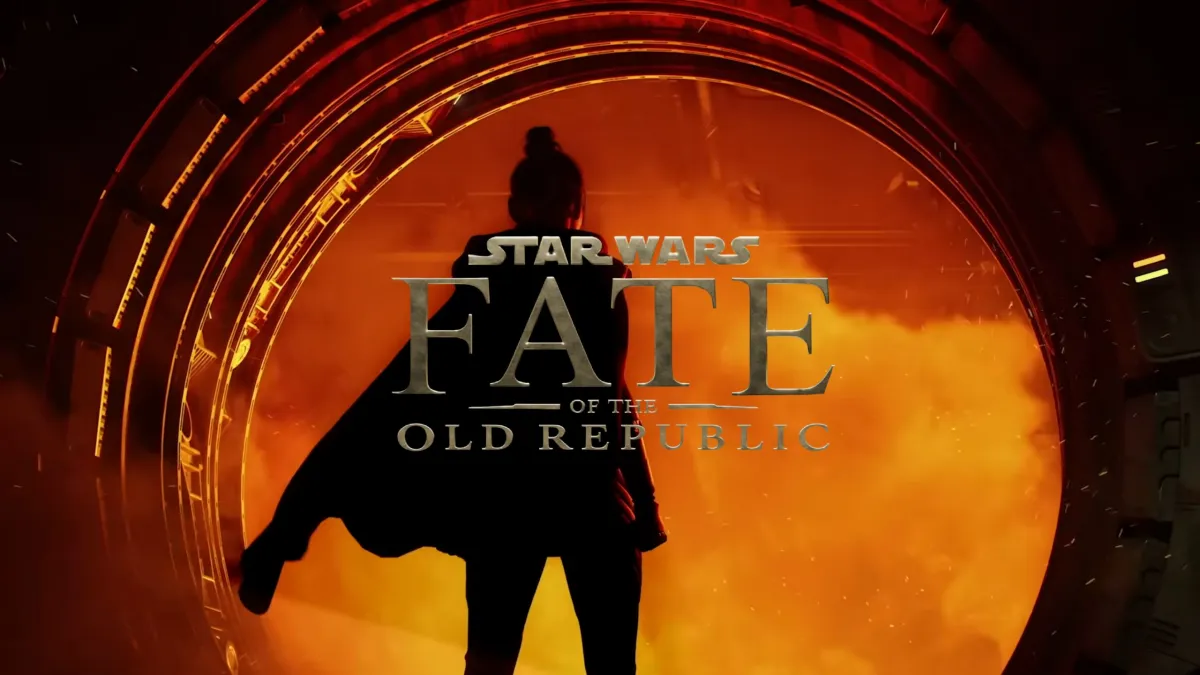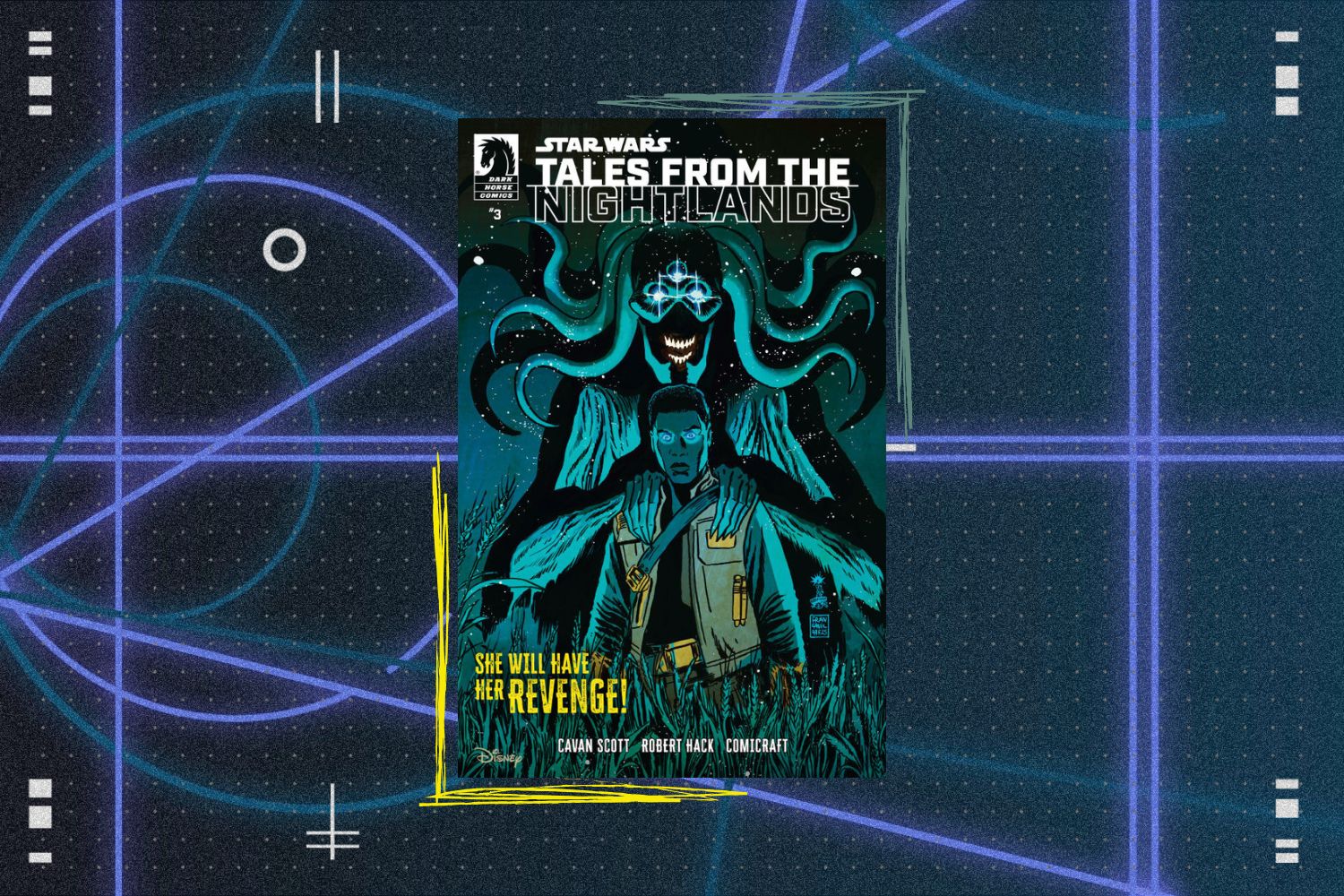The Mandalorian Wars: How Revan Defied the Jedi Council
How did Revan become one of the most legendary figures in the Star Wars Old Republic Era? Learn how the Mandalorian Wars influenced the arc of this fan favorite character.
Apr 28, 2025
Electronic Arts/Lucasfilm/Youtini Illustration
Note: This article may contain affiliate links, meaning we may earn a commission if you purchase through them at no extra cost to you. See our disclaimers for more information.
Nearly four thousand years before the Original Trilogy, before Boba Fett put Mandalorians on the map, the Mandalorian Wars were a galaxy-spanning conflict that redrew the lines between heroes and villains. In the Star Wars Legends chronology, Mandalore the Ultimate (along with Cassus Fett, an ancient ancestor of Jango and Boba) led the Mandalorians in a crusade that upended the galaxy.
Brutally attacking the galaxy one planet at a time, the Mandalorians forced a schism within the Jedi Order. The fires of war forged one of the most storied characters in galactic legend: a Jedi-turned-Sith-turned-Jedi once more — Revan.
Setting the Stage: The Background of the Mandalorian Wars
The Mandalorian Wars occurred between the Great Sith Wars, starring Exar Kun and Ulic Qel-Droma, and the Jedi Civil War, featuring Revan and Darth Malak. After facing the fallen Jedi Ulic Qel-Droma on Kuar in the Sith’s conflict against the Jedi, Mandalore the Indomitable earned the loyalty of the Mandalorians. In the war’s waning days, the Mandalorians retreated to Onderon’s jungle moon, Dxun. Shot down, Mandalore was then devoured by the moon’s indigenous beasts. A successor donned the leader’s mask, assumed the title Mandalore the Ultimate, and began to rebuild the warriors’ ranks.

Random House Worlds
Mandalore the Ultimate led the Mandalorians to conquer worlds on the outskirts of the Republic, building his army’s strength in battle before attacking the Republic directly. What exactly led him to ignite his crusade? Some say it’s Mandalorian nature, with each Mandalore wanting to prove themselves against the legendary Mandalore the Conqueror.
In another explanation (admittedly a later retcon of the story), however, legend has it that the Sith Emperor sent an envoy to recruit Mandalore to besiege the Republic after a Force vision guaranteed victory. Either way, unsuspecting citizens of the galaxy looked to the sky as jetpack-clad invaders in intimidating helmets and armor descended and set their worlds ablaze.
War Begins: The Spark That Ignites the Conflict
The pivotal clash that escalated the war to more destructive proportions and turned the tide against the Mandalorians was the Battle of Cathar. There, Cassus Fett took the crusade to a new level of brutality, nearly eliminating the entire Cathar species. One Mandalorian stood up to Cassus’s overindulgent penchant for violence but was subsequently executed along with the remaining Cathar.
Enter Revan.

Mavel
A Jedi Knight who had gathered a cult appeal among his own Jedi faction, Revan and his “Revanchist” followers had begun taking back territory lost to the Mandalorians. The Jedi Crusader followed the action to Cathar. Stepping on a fallen Mandalorian’s mask, Revan and the Jedi beheld a Force vision of the massacre that had taken place. He then donned the mask and vowed not to remove it until he halted the Mandalorian threat to the galaxy. The indiscriminate destruction radicalized him, leading him to beseech the Jedi Council to intervene and end the campaign.
The Jedi Council's Refusal to Get Involved
Nevertheless, the Council refused. Viewing the Mandalorian threat as nothing more substantial than a rogue warlord raiding worlds on the border of Republic space, they chose the path of minimal-to-non-involvement. After all, this was before Jedi became Generals in the Clone Wars. At this point, they avoided large-scale warfare, wary of the slippery slope to the dark side of the Force.
From a certain point of view, they were right. . .

Gentle Giant
Though the Council chose to keep the Cathar massacre a secret, Revan took matters into his own hands, his charisma at odds with the Council’s conservatism. He used the atrocity to motivate his coalition to join the fray. He rallied a militia of rogue Jedi willing to follow him, no matter the cost. His Revanchists didn’t require the Jedi Council's approval from behind-closed-doors meetings within the Jedi Temple. They only needed Revan himself to take up arms with his iconic purple lightsaber.

Hasbro
They found support for their war from the Republic army rather than the Jedi Council. (Though eventually, fearing Revan’s groundswell of support, the Council begrudgingly consented.) Revan and his Jedi compatriot Alek (later Malak) were named generals in the Republic army by proving themselves through conflicts at Ord Mantell, Serroco, Duro, Althir III, and Taris, among others.
Revan began to adopt a victory-at-all-costs approach, making increasingly costly sacrifices that resulted in more and more collateral damage. This, along with the discovery of the Star Forge, his visit to the Sith homeworld of Korriban, and the acquisition of forbidden knowledge at the Trayaus academy, were all major factors in the pair’s gradual slide to the dark side of the Force.
The War's End and the Tragedy of Malachor V
Finally, after approximately eight years of scattered skirmishes, the time had come for a decisive tactical move. Luring the Mandalorians into a trap, Revan led the charge against them at Malachor V. There, Revan slew Mandalore the Ultimate in a final showdown — but that wasn’t enough. He took the Mandalore’s mask as a trophy, preventing a proper succession in leadership.

Electronic Arts/Lucasfilm
Then came more tragedy, this time for both sides: Revan’s general, Meetra Surik, unleashed experimental gravity-projection technology upon Malachor V. The Mass Shadow Generator fractured the planet, leading to horrific desolation and catastrophic collateral damage to both the Mandalorian and Republic fleets. Mandalorians would remember the day as “The Great Last Battle.”
Fallout
While this controversial battle won the war, it led to another. Revan and Malak pursued fleeing Mandalorian remnants into deep space and uncovered the ancient Rakkatan war machine factory known as the Star Forge. They fully embraced the dark side of the Force and established the New Sith Empire, which waged war against the Republic. Malachor V became the base of operations for the Sith Triumvirate. The Jedi Council would suffer the consequences for their failure to either support Revan or hold him back from the dark side.
Where to Find Revan's Story
Ultimately, this summation covers events in several Star Wars stories that are well worth your time.
The backstory of the Great Sith War is in the Tales of the Jedi comics from Tom Veitch, Kevin J. Anderson, and artist Chris Gossett. Therein, Mandalore the Indomitable duels with Ulic Qel-Droma, unites his Mandalorian armies to the Sith cause, and subsequently is left in shambles on the Dxun moon.
The video game Knights of the Old Republic — one of the greatest video games ever made, Star Wars or otherwise — tells much of the tale in bits and pieces, particularly the journey of Revan in the Jedi Civil War in the aftermath of the Mandalorian Wars themselves.
The sequel, Knights of the Old Republic II: The Sith Lords, explores the aftermath of the massacre at Malachor V and the fate of the planet following the war. It not only is an enjoyable game in its own rite, but fills in the gaps and expands the lore of the Mandalorian Wars as you play as Revan’s lieutenant and reunite with Bao-Dur, who created and deployed the Mass Shadow Generator and attempt to atone for (or avenge) their sins from the past.

Marvel
The Knights of the Old Republic comics by John Jackson Miller take us right into the heart of the Mandalorian Wars. The series follows failed (and hunted) Padawan Zayne Carrick as he runs into the Revanchists, tracks down a deranged Mandalorian scientist, and encounters Alek several times. The ~50-issue series is a beloved Legends comic adventure and is especially great if this subject is up your alley.
Finally, the reference books The Essential Guide to Warfare, The New Essential Chronology, and The Essential Atlas all contain additional material on the Mandalorian Wars, offering unique insights into the intricacies of the conflict.
Ultimately, the Mandalorian Wars serve as a microcosm of what makes Star Wars interesting — a morally complex dilemma that leaves plenty of room for nuance and ambiguity. Was Revan right for leading the Jedi to war? Was the Council right in wanting to avoid the temptation of the dark side that often accompanies bloodshed? Plus, let’s face it — Mandalorians are just awesome.
For more discussion of Revan, our Star Wars Legends podcast recently tackled the topic. Here’s the write-up recap. For (virtually) everything you’d ever want to know about the fan-favorite Jedi-turned-Sith-turned-Jedi-again, be sure to check out our Complete Guide to Star Wars’ Most Iconic Sith Lord. And if you're looking for some Revan-related books to read, we’ve got a guide for that too!
Jared Mayes is a co-host of Legends Lookback at Youtini and one of the site's Legends aficionados. He is a dad, Christian minister, and aspiring Pokémon trainer. Jared’s favorite Star Wars story is 1991’s Dark Empire comic. Since 2019, he has been writing and podcasting, hosting Legends Lookback for all your wacky Star Wars Legends needs.













